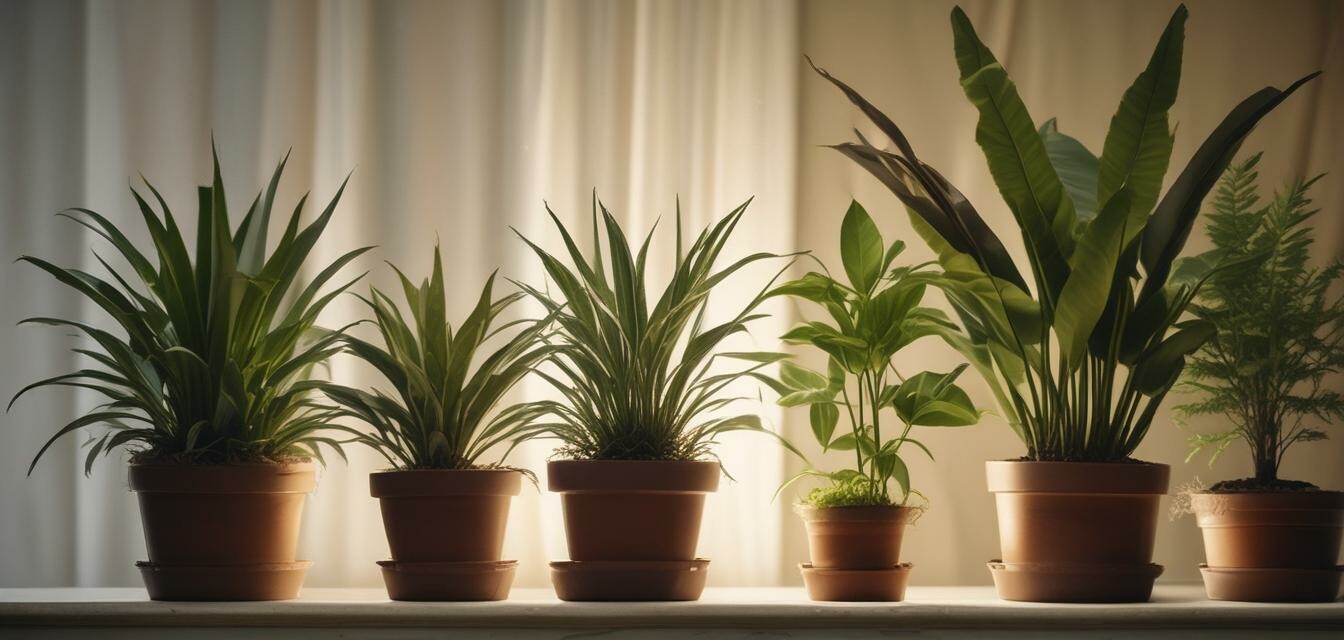
Troubleshooting Common Houseplant Problems
Key Takeaways
- Identify signs of distress in houseplants, such as yellowing leaves and drooping stems.
- Evaluate care routines for overwatering, underwatering, or inadequate light.
- Learn common pest issues and how to manage them effectively.
- Adjust environmental factors to improve plant health.
Taking care of houseplants can be rewarding, but it can also come with its challenges. Troubleshooting common houseplant problems is essential for ensuring your green companions thrive. In this guide, we will explore common issues such as yellowing leaves, drooping stems, and pests, along with effective solutions to help your plants flourish.
Identifying Common Houseplant Problems
Understanding the signs that your houseplants are not feeling their best can help you take the necessary steps to fix the problem. Below are some common issues you may encounter:
| Common Issues | Signs | Possible Causes |
|---|---|---|
| Yellowing Leaves | Leaves turning yellow, starting from the bottom | Overwatering, nutrient deficiency, or poor drainage |
| Drooping Stems | Stems wilt and droop | Underwatering or overwatering |
| Brown Leaf Tips | Leaves have brown, crispy edges | Low humidity or underwatering |
| Pest Infestation | Visible pests or spots on leaves | Insect pests such as aphids or spider mites |
Common Houseplant Problems Explained
1. Yellowing Leaves
Yellowing leaves are one of the most common signs of trouble in houseplants. To help your plant recover, consider the following:
- Check Watering Schedule: Make sure you are not overwatering. Allow the topsoil to dry out before watering again.
- Examine Drainage: Ensure your pot has adequate drainage holes to prevent root rot.
- Test Soil Nutrients: If yellowing persists, it may be time to feed your plant with a balanced fertilizer.
2. Drooping Stems
Drooping stems can indicate a need for immediate intervention. Here’s how to address this issue:
- Assess Watering: Check if the plant is underwatered by sticking your finger into the soil. If it’s dry, give it a drink.
- Observe Lighting Conditions: Ensure your plant receives adequate sunlight. Lack of light can lead to weak growth.
3. Brown Leaf Tips
If you notice your plant's leaves developing brown tips, consider these factors:
- Increase Humidity: Many houseplants thrive in higher humidity levels. Consider grouping plants together or using a humidifier.
- Water Regularly: Ensure your plant continues to receive enough water, especially during dry seasons.
4. Pest Infestation
Pests can wreak havoc on your indoor garden. To control and prevent infestations, follow these tips:
- Inspect Regularly: Frequently check your plants for signs of infestation such as webbing or sticky residue.
- Use Natural Remedies: Options like neem oil or insecticidal soap can help manage pest populations effectively.
Summary of Troubleshooting Tips
By observing your houseplants regularly and addressing their needs, you can minimize common issues. Here’s a quick recap of essential troubleshooting tips:
| Issue | Solution |
|---|---|
| Yellowing Leaves | Check watering and drainage, and consider fertilizing. |
| Drooping Stems | Adjust watering habits and ensure adequate light. |
| Brown Leaf Tips | Increase humidity and maintain proper watering schedules. |
| Pest Infestation | Inspect your plants and use natural remedies for control. |
Further Resources
If you’re looking for specific care tips for various types of houseplants, feel free to explore these articles:
- Care Tips for Thriving Houseplants
- Top Air-Purifying Plants
- Best Non-Toxic Plants for Pet Owners
- Easiest Houseplants for Beginners
- Comprehensive Buying Guides for Houseplants
Remember, each plant has unique needs, so understanding their specific requirements can greatly enhance their health and longevity. By applying these troubleshooting tips, you can ensure your houseplants will thrive in your home.
Pros
- Improves plant health and aesthetics.
- Enhances air quality in your home.
- Brings joy and tranquility.
Cons
- Some plants may take time to recover.
- Requires consistent monitoring and care.
- Certain issues may require professional advice.
Start creating your lush indoor garden today by applying what you've learned. Happy planting!

